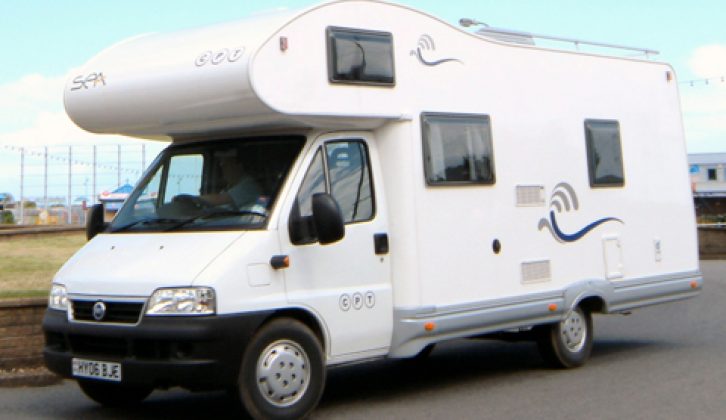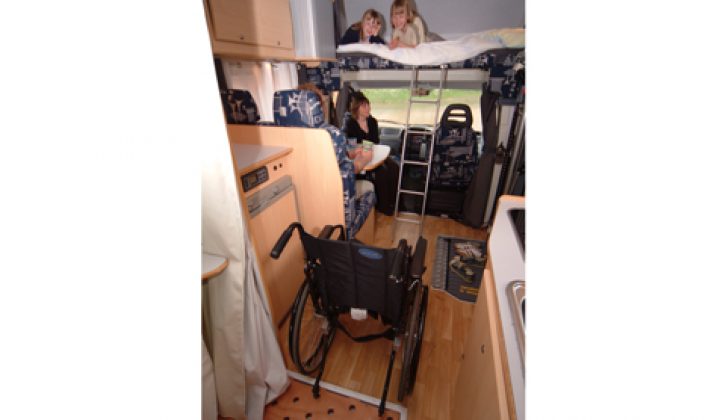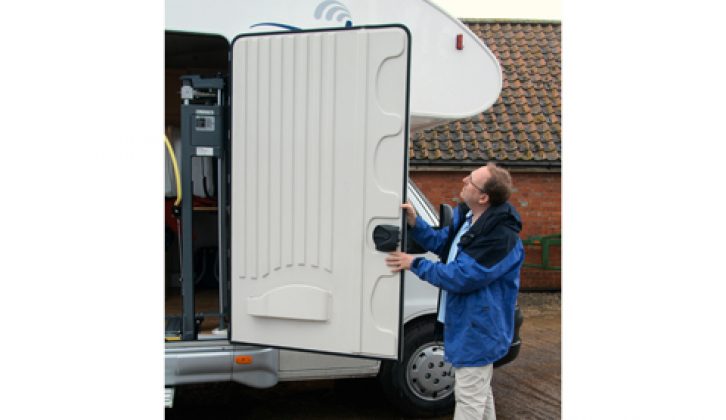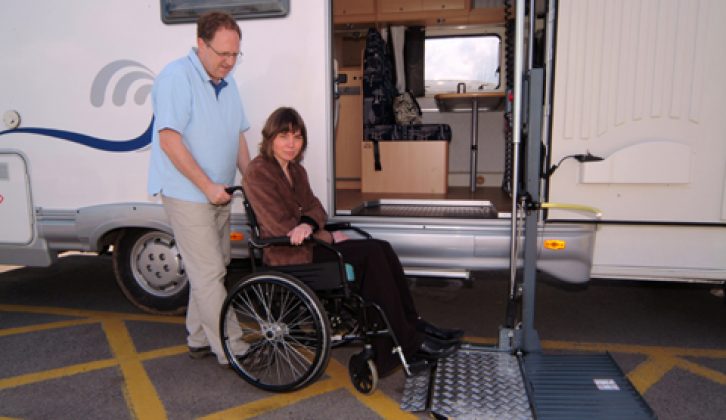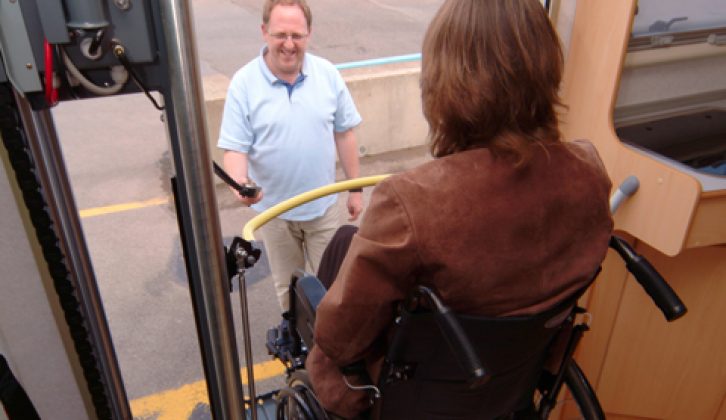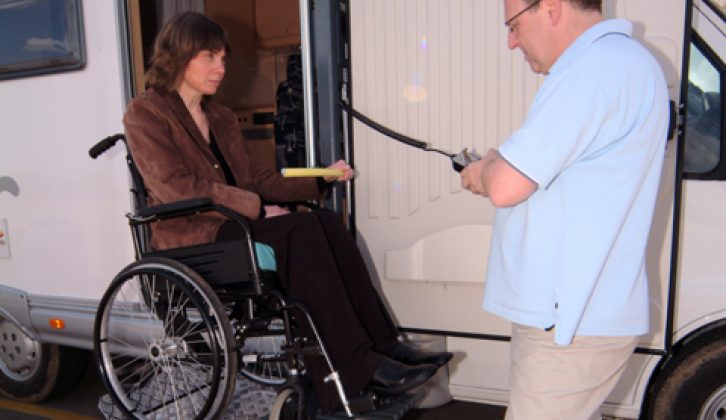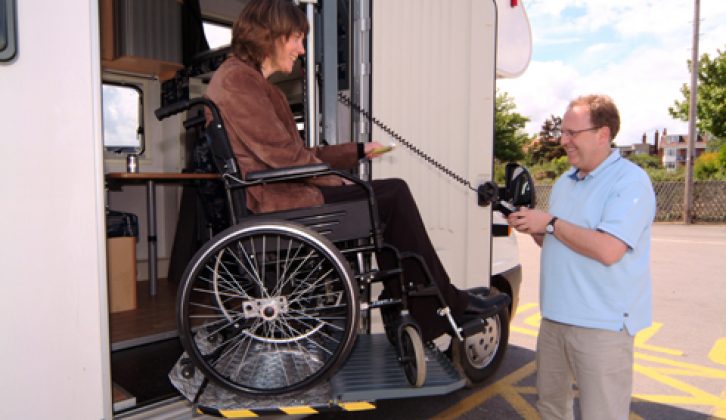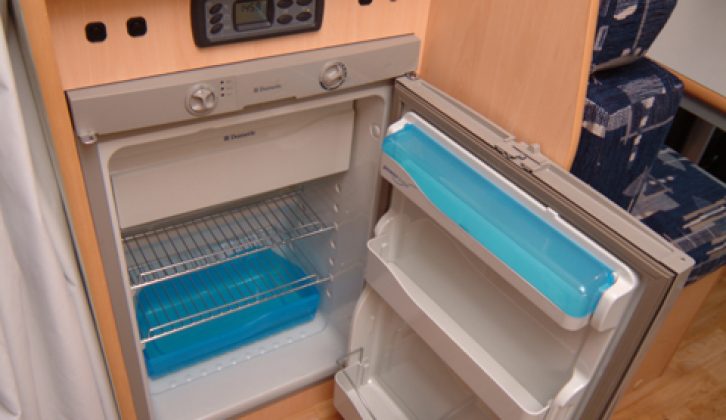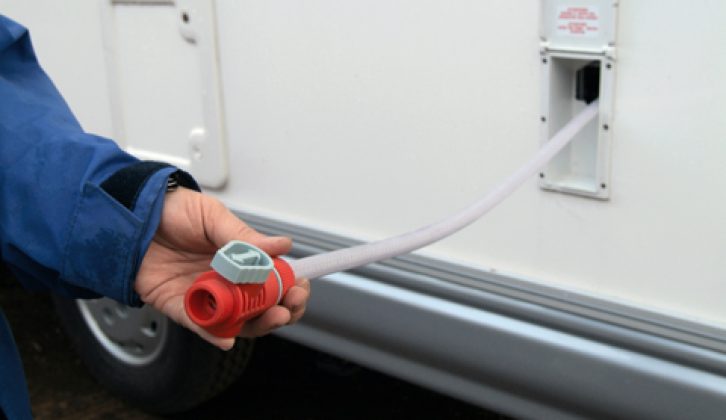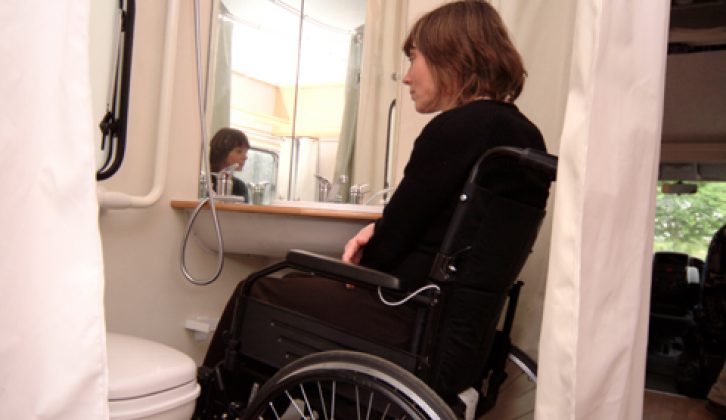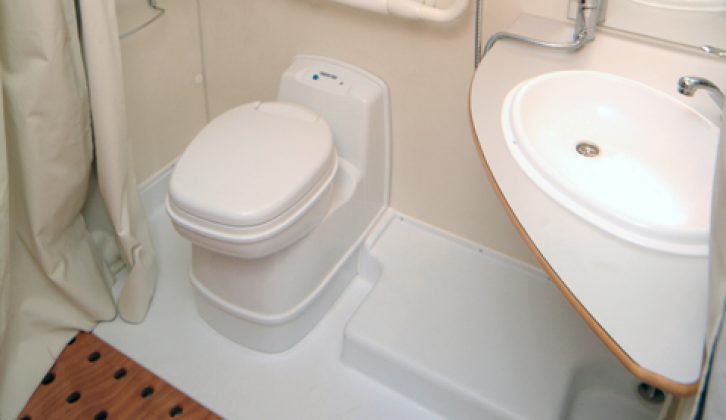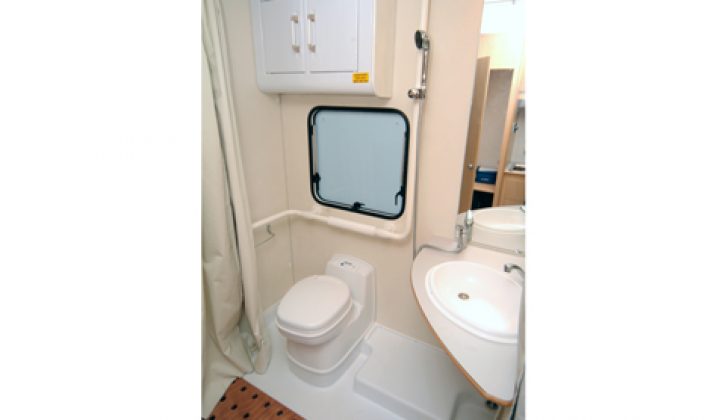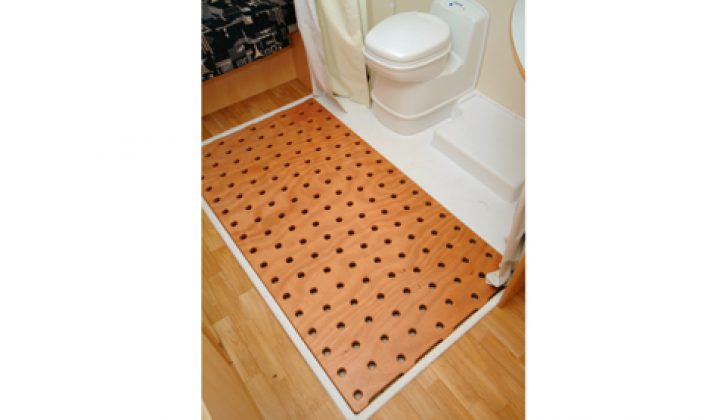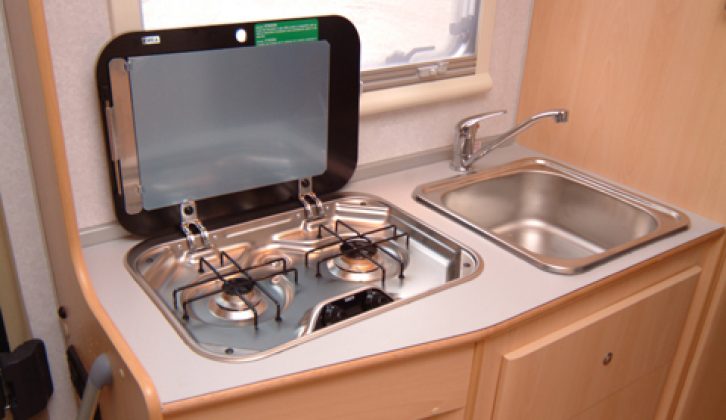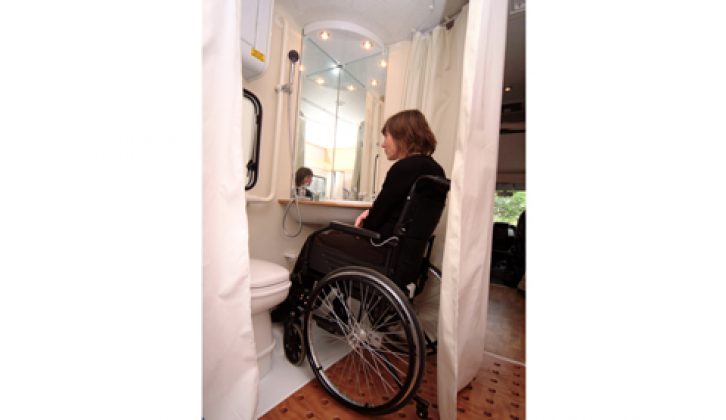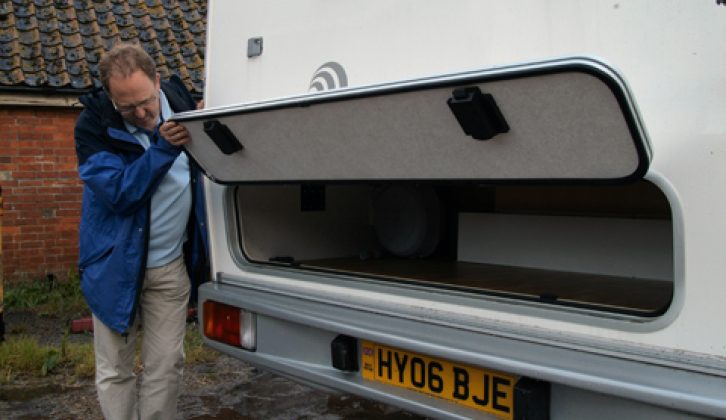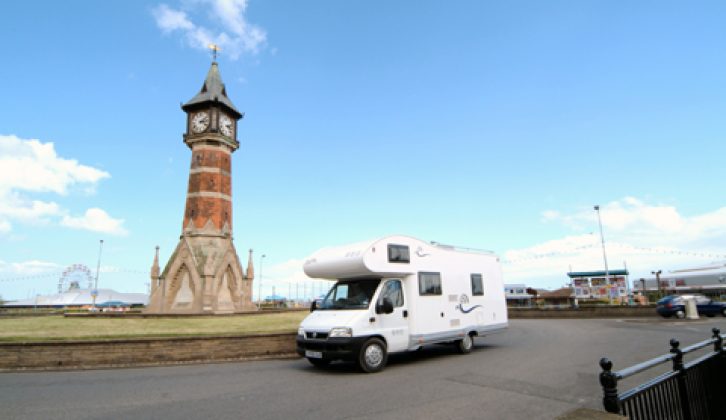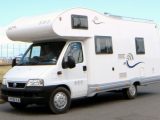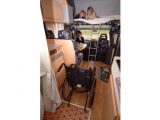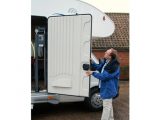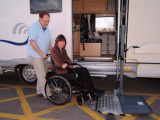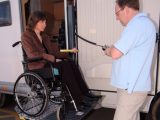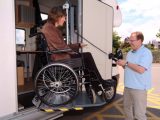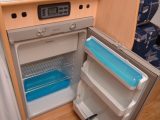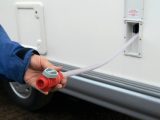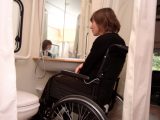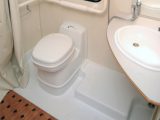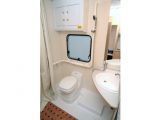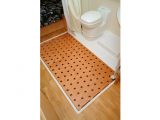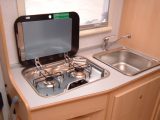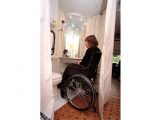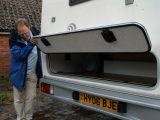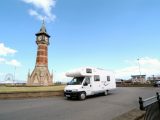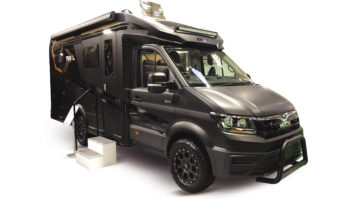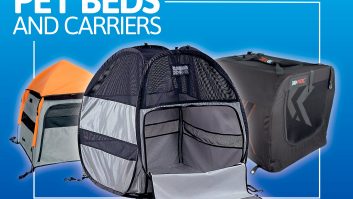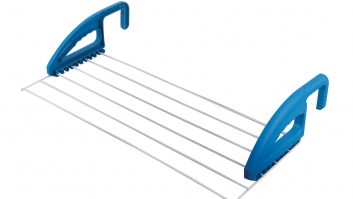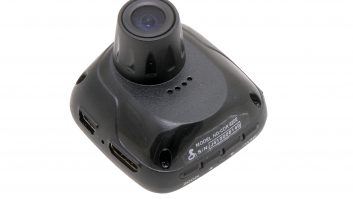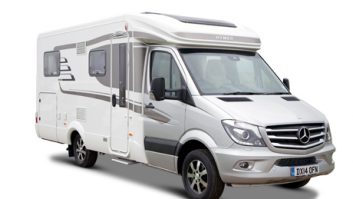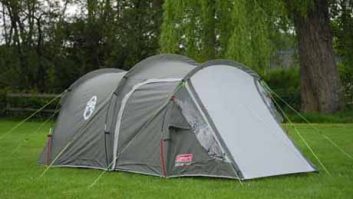Verdict
A brave effort, but sadly the CPT is only really suitable for a particular type of disabled person: one who has some mobility and enough strength to move themselves in and out of their wheelchair. We’d also urge the designers to redesign the wide entry door and consider a sliding one instead. It is reasonable value but lacks the luxuries you’d find in other £40,000 ‘vans (the equivalent cost, as the CPT is VAT-free). So, for now, we recommend buyers look to specialists such as Bilbo’s to get exactly what they’re after.
Pros
Thoughtful kitchen; terrific washroom; wheelchair access; roomy overcab bed
Cons
Unsatisfactory wheelchair anchors; on-road noise; door won’t seal on the move; no hoist for getting into bed
Go to any motorhome show and it’s obvious that there’s a sizable number of potential buyers who use wheelchairs and are looking for a motorcaravan to suit their particular needs.
A big round of applause then, for Italian firm SeA for bravely going where few other motorhome manufacturers have dared. It has launched a specially converted model for disabled buyers. Based on the Elnagh Clipper 40, the CPT is a completely standalone model, offering a unique layout with a wheelchair lift. Its merits have never been fully tested by a disabled user until this exclusive Practical Motorhome live-in test. My wife Sarah has restricted mobility and uses a wheelchair most of the time, so the prospect of a motorhome that makes life easier was exciting indeed. To test just how much easier the CPT makes touring we decided to take it to sunny Skegness, on the east coast, for a few days. The British seaside resort is a wheelchair-friendly town thanks to its elderly population and so it was a good venue in which to see what the CPT could do. Packed up with provisions and two kids in tow, we made our way to the excellent Lakeside Park which is run by Don Amott, up the coast from Skegness, near Somercotes. We lived in the CPT to see how it performed on tour, on the road and among the built-up traffic in town.
Living
With a forward-facing bench sofa the dining table extends to allow the wheelchair to fit comfortably underneath. The two cab seats swivel round to provide seating for five. This area of the ’van works well, with a decent amount of room and good lighting, making it a pleasant space.
The area by the door has enough room in which to manipulate a wheelchair but there is no satisfactory way to secure it. If the disabled person is transferred to the bench sofa there are also drawbacks. As Sarah explained, “The seat back is too upright and there are no side supports, so any disabled person without a reasonable amount of torso support will struggle. On the move, you’re really thrown around. This is particularly disappointing as the layout makes it impossible to sit in your wheelchair while on the move, and feel safe.”
Kitchen
It’s basic, but effective. There’s no oven although you get a two-burner hob – you’ll not be dining in style but it’s practical nonetheless. All the worksurfaces are, thoughtfully, at a wheelchair-friendly height and the end cupboard is recessed to improve access in the kitchen. There are a good number of cupboards and the kitchen worktop has some preparation space. The Dometic fridge is adequate at 110 litres and should be enough for a family of four.
Washroom
Full marks here for a considered design which works well in theory and in practice. Clearly some substantial thought has gone into how the shower would work and it’s a masterpiece of design. It features a central draining area covered by a wooden grate, and two substantial rubberised curtains that completely encircle the space and define the shower area. The disabled user is able to stay in their wheelchair while showering but this would have to be while holding the shower head as the rail on the wall doesn’t hold the shower head in a sufficiently accurate position.
We praise the sensible location of the washbasin, which is nice and low. The fittings themselves, such as the wall-mounted plastic cupboard, aren’t luxurious but they look fine and should stand up to sustained use.
The swivelling Thetford cassette toilet is also in the shower area and has its own separate curtain to save your blushes. While it’s not quite as private as an enclosed toilet area, it’s a great compromise and allows the use of a commode chair by the disabled person, if they are not mobile enough to transfer themselves to the toilet. There are also well-placed grab rails behind and beside the toilet.
Beds
First the good news: the overcab bed is spacious, with plenty of headroom and slats to support the large mattress. There’s a useful space for books and a light switch to aid bedtime reading, too. The bed base is hinged, which allows it to be pushed up and give improved headroom in the cab.
Disabled tourers sleep on the rear fixed double bed. The mattress aligns with a wheelchair seat as it’s installed at a lower level than normal.
It’s disappointing that this attention to detail didn’t extend to the light switches. They are placed at the opposite end to the headboard, which is annoying for anyone but useless for a disabled person with restricted movement.
Also, unless the wheelchair user has some mobility and can transfer themselves into bed via a board, it’s lift and place time again for the carer. NHS nurses will be disgusted reading this as they know that a hoist is the only way to move a disabled person into bed: manual lifting is a no-no. We did, however, break the rules and I lifted Sarah each night. It’s an experience I’d not want to repeat. As far as I could see there was no provision for a hoist although there are plenty of aftermarket options, including a line hoist in the ceiling. It’s a shame these aren’t manufacturer options, as it would reduce the cost of expensive modifications.
Sarah also criticised the narrowness of the rear bed: at 0.93 cm, it’s a bit of a squeeze for two adults. It’s an airy and light place, though, with three large rear windows and a roof light. Also losing the CPT marks was the lack of grab rails. This is another rear-bed modification that most disabled users would need before they could use the rear bed unassisted.
Storage
The amount of storage space is good, with eight eye level lockers in the lounge and another three in the kitchen. There’s a storage area under the rear bed accessed via a panel door on the rear of the motorhome, although that has no stay and so has to be held open while loading. There’s also a rear access ladder and roof rails so you can access the roof for storage, such as the addition of a roof box.
NB: Disabled people do not incur VAT when they buy items that are designed, or adapted, solely for their use. So, motorhomes such as
SeA’s CPT are exempt from VAT, which provides a substantial saving.
To claim, the disabled user must fill out a declaration form.
Further information: tel 0845 010 9000; web www.hmrc.gov.uk.
Declaration form: www.rdkmobility.co.uk/vatexemption.html.
Technical Specifications
| Payload | 410 kg |
| MTPLM | 3500 kg |
| Shipping Length | 6.94 m |
| Width | 2.30 m |
